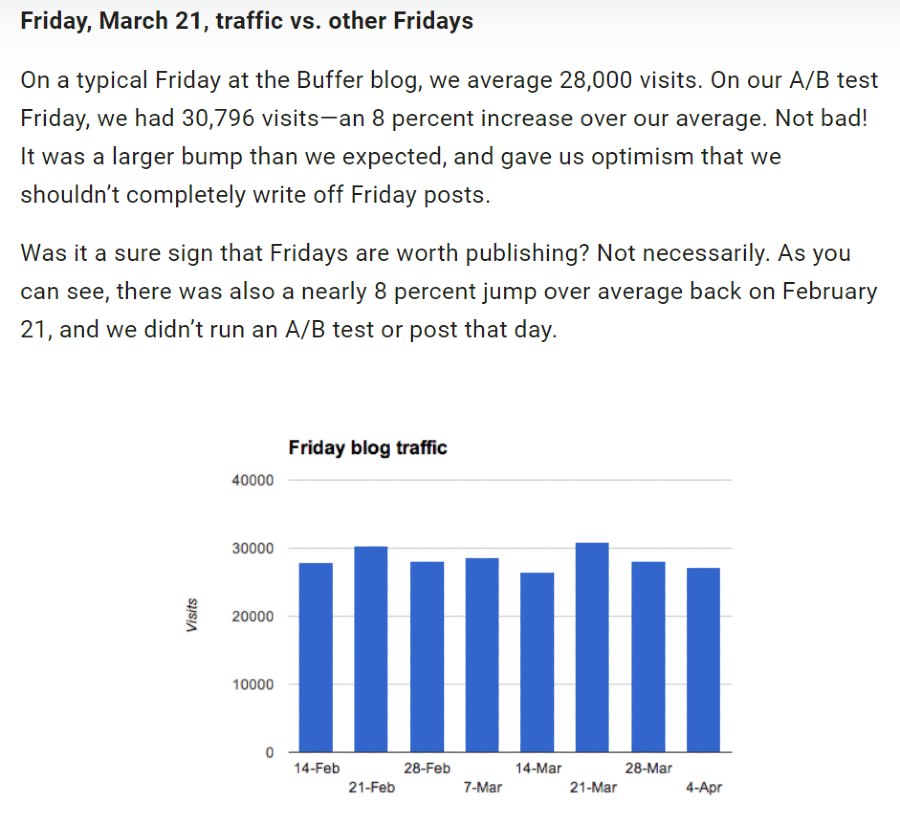13 Apr

Marketers have relied on A/B testing content to see how their marketing campaigns are performing. With the data they obtain, they can further assess which piece of content performed the best and move forward by executing better campaigns. But do you ever wonder if you should pursue A/B testing?
Learn more about A/B testing and how you could conduct A/B testing for your blogging efforts.
What is A/B Testing?
A/B testing (split testing) is creating two versions of content and seeing how each one performs. Most marketers would A/B test websites, emails, and blog posts. This enables them to assess which content version performed better. But why do marketers do it, and what do they get out of it?
Reasons for A/B Testing Content

Increased Website Traffic
Many experts would agree that conducting A/B testing on your blogs or other marketing assets or materials may increase web traffic. Since you have two versions of the same content sent or published, you may expect more visitors flocking to your site.
Higher Conversion Rates
Considering you have two variations of the same content, it means you have two different call to action (CTA) phrases as well. With this in mind, you can observe which phrase performed better.
Decreased Bounce Rate
Once you have enough data about some of the blog posts you’ve conducted split tests before, this will help produce blog posts more people will read. Not only that, they can stay longer on your site and won’t leave immediately.
Better Content
When you’re A/B testing content, you want to make sure that you always have an improved version of your content. You may have to remove some unnecessary elements, replace new content with better ideas, or increase word count but consider the visitor in mind. This will help boost your blog traffic and even have visitors navigate to other parts of your site.
How to A/B Test Content?

If you think A/B testing content is worth your time, you can start by identifying which blog posts to A/B test. For example, you could have one keyword but two blog posts dedicated to that keyword; you could conduct A/B testing for that.
Here’s a quick overview of how experts conduct A/B testing:
- Identify one variable
- Set a goal
- Determine the control (current content you have) and challenger (new content)
- Segment audience
- Proceed with testing (and make sure to wait until you have gathered enough data before finishing the A/B test)
- Evaluate data and see what’s the next course of action
You can play around with different elements like word count or images, which we shall discuss later. But how do you A/B test content? To ease up and automate your A/B testing efforts, you’ll need tools to do the job for you.
It’s best to use A/B test tools like:
- Optimizely
- Google Optimize
- VWO
- Crazy Egg
- ABTasty
By using tools like these, you don’t have to worry about doing the hard work. You can click which variants need testing, input URLs for testing, and they’ll do the rest for you.
Example Variables in A/B Testing Your Blog
If you’re thinking of A/B testing your blog, here are the five main variables when A/B testing content.
1. Headline
No matter how good your headline may sound the first time you publish it, it’s a great idea to A/B test it as well. You want to ensure that the headline will persuade your target audience to read your blog. Having another headline in place of the original will help you understand which types of headlines draw in your audience.
If you want to publish a captivating headline, you can analyze your headline and see if it’s worth clicking. The best way to analyze your headline is using CoSchedule’s headline analyzer or the Advanced Marketing Institute’s EMV one.

Here’s a case study by WordStream where they A/B tested headlines for 31 days. Their findings include:
- A high score on the headline analyzer doesn’t mean more clicks
- Their most clicked headline only had a 71 on the headline analyzer
- High-quality headlines and high-quality content work hand-in-hand to get more traffic and clicks
2. Blog Images
You can also experiment with your blog images. Design is a common A/B test variant on websites and emails. Your blog post should also test it to see which type of image would entice visitors to read the blog.
For example, version 1 has stock images, while version 2 has custom blog graphics. From there, you can use the “Time Spent on Page” metric. This will help you assess which blog version performed better than the other.
3. Word Count
Convert points out that word length also matters when you do A/B testing. But content marketers should ensure that if you were to add more words, it’s to help the visitor move along the buyer’s journey or marketing funnel. In this light, how many words should you have when you A/B test?
Many experts will tell you that the word count for blogs varies. A blog post with 300 words can suffice. But some marketing experts found, you might need to post more than 300 words to get more visitors and traffic.
Research by Hubspot shows that blogs with 2,500 words will help your blog rank on Google. Meanwhile, Buffer reveals that it’s 1,600 words and above. But, Portent finds that you should have a blog post with 2300 to 2600 words for SEO purposes.
With all of these in mind, there’s no definite word count to follow, but try to adhere to writing 1000+ words or more.
For your A/B testing, you can try A/B testing content with similar keywords. It’s best not to duplicate your content for the sake of A/B testing. In this case, your workaround would be to see how your blogs will fare depending on the number of words you publish. You can then assess which blog posts had more traffic or time spent on the page.
Plus, this may even give you an idea of which blog posts could perform better for your site and let that become the basis of your blogging efforts.
4. Call to Action
Another thing to A/B test in your blogs is the Call to Action.
It’s a standard variable to test on other marketing materials or assets like email or landing pages. You don’t want to stick with overused phrases such as Shop Now or Sign Up. You can try mixing up your phrases from time to time and see if those work.
Plus, when it comes to A/B testing, you should also test your CTA button. You could place the CTA at the end of the blog. Or you can try having one in the middle. Wherever you plan to put it, make sure to note which one your reader is likely to click on.
5. Post Times
It’s best to observe the time when you post your blogs as well. For example, you may get more traffic when you post on Thursdays or the weekends. Or you have more traffic when you post consistently. But you also have to conduct A/B testing to assess which days yield the most traffic.

Buffer has conducted an A/B test of their blog post schedule. According to them, they had 2,000+ more visits when they post on Fridays.










